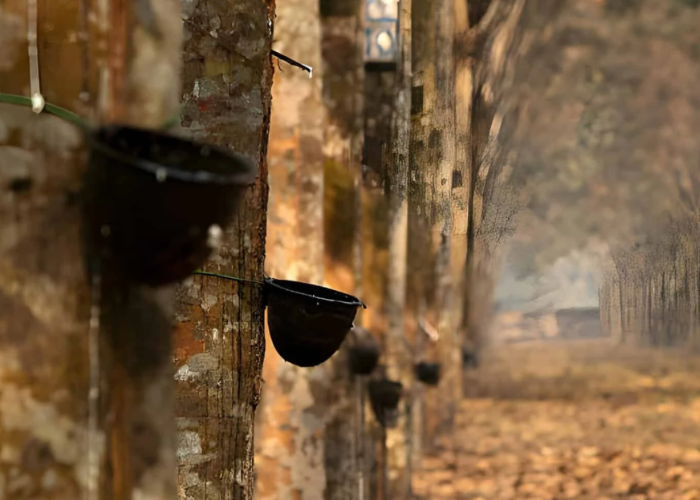Rubberwood
In the world of furniture and woodworking, the term “rubberwood” often comes up, but what exactly is rubberwood, and why is it gaining popularity in the industry? In this comprehensive article, we will delve into the depths of rubberwood, exploring its origins, characteristics, uses, and much more. So, if you’ve ever wondered about this versatile material, you’ve come to the right place.
Understanding Rubberwood
Rubberwood, scientifically known as Hevea brasiliensis, is not actually a type of wood in the traditional sense. It is derived from the rubber tree, which is primarily cultivated for its latex sap, the primary source of natural rubber. Once these rubber trees have reached the end of their latex-producing life cycle, typically around 30 years, they are harvested for their wood, giving birth to what we commonly refer to as rubberwood.

The Sustainability Factor
One of the key reasons for the growing popularity of rubberwood is its eco-friendly nature. As a byproduct of the rubber industry, rubberwood helps reduce waste and minimize the environmental impact. It provides an excellent example of upcycling, turning something that might otherwise be discarded into a valuable resource.
Properties of Rubberwood
It is, scientifically known as Hevea brasiliensis, possesses a unique set of properties that make it a sought-after material in various applications. Here are the key properties of rubberwood:
1. Light in Color
Rubberwood is renowned for its light, pale coloration. This characteristic makes it an ideal choice for furniture and woodcraft because it provides a neutral canvas that can be stained, painted, or finished to match various interior design styles. The light color brightens up spaces and creates a welcoming ambiance.
2. Density and Durability
While this wood is not as hard as some traditional hardwoods like oak or maple, it is still durable and resilient. It has a moderate density, which means it can withstand everyday use and wear and tear. Properly maintained rubberwood furniture can last for many years, making it an economical choice.
3. Sustainability
One of the standout features of rubberwood is its sustainability. Unlike traditional hardwoods that are harvested solely for timber, rubberwood is a byproduct of the rubber industry. When rubber trees complete their latex-producing life cycle, typically around 30 years, they are harvested for their wood. This upcycling process reduces waste and promotes responsible resource management.
As a result, this wood is considered an eco-friendly choice, contributing to forest conservation efforts.
Uses of Rubberwood
Rubber wood, derived from the rubber tree (Hevea brasiliensis), is a versatile material that finds applications in several industries. Its unique properties make it an attractive choice for various purposes. Here are some of the primary uses of rubber wood:
1. Furniture
One of the most prevalent and well-known uses of rubberwood is in furniture production. Its light color and smooth grain make it a favorite among furniture manufacturers. It is used to craft a wide range of furniture pieces, including:
Dining Tables and Chairs: It is often used to create dining tables and chairs, offering an elegant and timeless look for dining spaces.
Cabinets and Dressers: Its durability and workability make it suitable for crafting cabinets, dressers, and other storage solutions.
Bed Frames: Rubberwood bed frames are sturdy and long-lasting, providing excellent support for mattresses.
Coffee Tables: The versatility of this wood allows for the creation of unique and stylish coffee tables.
2. Woodcraft
Rubberwood is a popular choice among craftsmen and woodworkers due to its workability. Its moderate density makes it relatively easy to carve, shape, and craft into intricate designs. Woodworkers often use rubber wood for:
Carvings: The fine grain of this wood makes it ideal for detailed carvings and intricate designs.

Decorative Items: Craftsmen use rubberwood to create decorative items such as sculptures, figurines, and picture frames.
Customized Woodcraft: Its light color allows for easy customization through staining, painting, or finishing to fit specific design requirements.
3. Flooring
Rubberwood flooring has gained popularity in recent years due to its affordability and ease of installation. Its light color can brighten up a room and create a welcoming atmosphere. Rubberwood flooring is often chosen for:
Residential Spaces: Many homeowners opt for this wood flooring to achieve a clean and bright look in their homes.
Commercial Spaces: It is also used in commercial settings such as offices, retail stores, and restaurants.
Renovation Projects: Rubber wood flooring is a popular choice for renovation projects because it can easily update the look and feel of a space.
Advantages of Choosing Rubberwood
Rubber wood, also known as Hevea brasiliensis, offers several distinct advantages that make it an attractive choice for various applications. Whether you’re furnishing your home or undertaking a woodworking project, here are the key advantages of selecting this wood:
1. Cost-Effective
One of the primary advantages of rubber wood is its affordability. When compared to traditional hardwoods like oak or maple, this wood is generally more budget-friendly. This cost-effectiveness allows consumers to acquire quality furniture and woodcraft without straining their wallets. It’s an excellent choice for those looking for value without compromising on quality.
2. Eco-Friendly
Rubberwood is a sustainable and eco-friendly choice. Unlike hardwoods that are harvested solely for their timber, rubberwood is a byproduct of the rubber industry. When rubber trees complete their latex-producing life cycle, usually around 30 years, they are harvested for their wood. This practice reduces waste and promotes responsible resource management, making it an environmentally conscious choice.
3. Customization
The light color of this wood serves as a blank canvas for customization. Whether you prefer a natural wood look, a stained finish, or a painted surface, rubberwood allows for easy adaptation to your unique style and preferences. It offers versatility in design, ensuring that your furniture or woodcraft complements your interior décor seamlessly.
4. Workability
Rubber wood is prized by craftsmen and woodworkers for its workability. Its moderate density makes it relatively easy to carve, shape, and craft into intricate designs. This characteristic enhances the creative possibilities when working with rubberwood, allowing for the production of fine details and customized pieces.
5. Sustainability
As previously mentioned, it’s sustainability is a significant advantage. By utilizing a byproduct of the rubber industry, rubberwood helps conserve forests and reduce the demand for traditional hardwoods. Choosing this wood aligns with the environmental conservation efforts and supports sustainable resource management.
6. Durability
While rubberwood may not be as hard as some other hardwoods, it still offers durability and resilience. When properly maintained, rubberwood furniture can withstand everyday use and wear and tear. Routine care, such as dusting and cleaning spills promptly, ensures that rubberwood pieces remain in excellent condition for years to come.
Conclusion
Rubberwood, derived from the rubber tree, is a versatile and sustainable material that has found its place in the world of furniture and woodworking. Its affordability, eco-friendliness, and ease of customization make it a popular choice among consumers and craftsmen alike. So, whether you’re furnishing your home or embarking on a woodworking project, consider the benefits of rubberwood. It’s a sustainable choice that combines style and durability.
FAQs (Frequently Asked Questions)
1. Is rubberwood a type of rubber?
No, it is not a type of rubber. It is a type of wood derived from the rubber tree, primarily used for furniture and woodworking.
2. Is rubberwood durable?
Yes, it is known for its durability, making it a suitable choice for furniture and woodcraft.
3. Can rubber wood be stained?
Absolutely! Rubberwood’s light color makes it an excellent candidate for staining or painting to achieve your desired look.
4. Is rubberwood eco-friendly?
Indeed, rubberwood is considered eco-friendly as it is a sustainable resource that reduces waste in the rubber industry.
5. What are the disadvantages of rubber wood?
While rubber wood is durable, it is not as hard as some other hardwoods, which may lead to surface dents or dings over time if not properly cared for.
6. How do I maintain rubberwood furniture?
To maintain rubber wood furniture, regularly dust it with a soft cloth and clean any spills promptly. Use a wood conditioner or furniture polish to keep it looking its best.
Also read: The Beauty of Burl Wood

